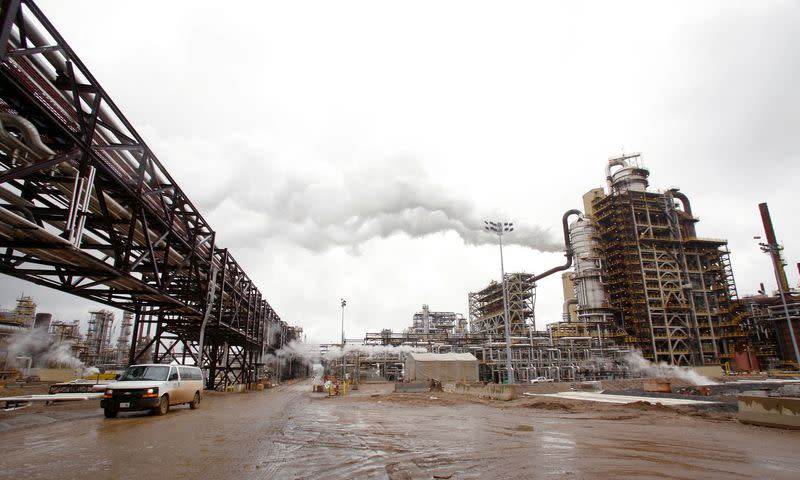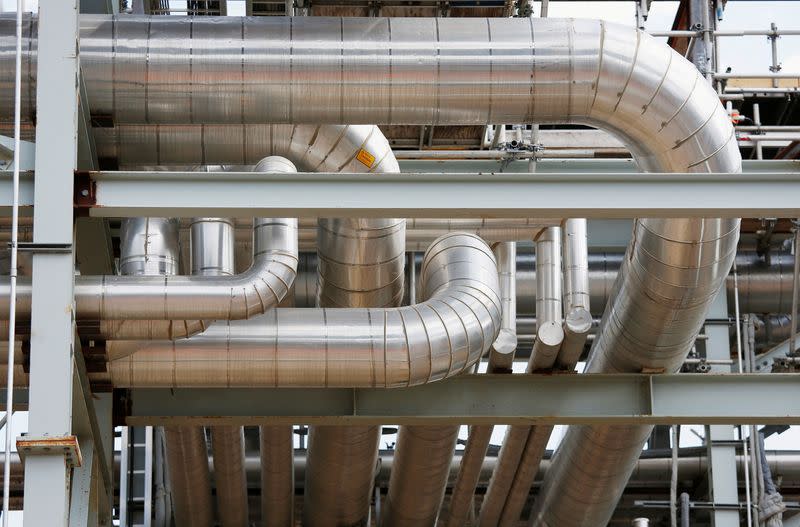Canada unions brace for 2025 labor crunch in oil sands maintenance season
By Nia Williams
(Reuters) - Annual maintenance on Canada's oil sands plants is forecast to cause no more disruption than usual this year, but trade union officials are warning of a labor crunch during Alberta's 2025 turnaround season as construction takes off on two new industrial projects.
Every year producers in Alberta hire thousands of extra skilled workers to execute essential maintenance on oil sands upgraders, thermal projects and refineries. Canada is the world's fourth-largest oil producer, and roughly two-thirds of its 4.9 million barrels per day (bpd) of crude come from northern Alberta's oil sands.
The turnarounds, lasting from a few weeks to a couple of months, often involve temporarily shutting down production and can squeeze Canadian crude prices higher.
Maintenance at projects owned by Suncor Energy, Canadian Natural Resources, Cenovus Energy and Imperial Oil will take around 238,000 bpd of crude offline during the second quarter, according to company presentations, nearly 5% of Canada's total production. A further 93,000 bpd will be shuttered in the third quarter.
This year maintenance season is relatively steady, union representatives told Reuters, with turnarounds at major projects spaced out and enough workers available.
In 2025, however, oil sands projects and Alberta refineries will be forced to compete for skilled trades as construction starts at Dow's C$8.9 billion ($6.5 billion) chemical plant near Edmonton and work on a C$1.6 billion hydrogen facility being built by Air Products gathers pace.
"This is the calm before the storm," said Terry Parker, executive director of the Building Trades of Alberta, adding wages are set to rise 3.6% this year, on top of a 4% increase last year.
A tighter labor market will likely push up wage bills for producers as they offer incentives and bonuses to secure workers and force them to bring in foreign trades, Parker said.
Canadian Natural, the country's biggest oil and gas producer, said it monitors the availability of skilled workers on an ongoing basis and works with service providers to ensure it has enough people for maintenance activities.
The other companies did not respond to requests for comment.
Next year could mark the start of a multi-year period of tighter labor markets in Alberta. Construction on the Dow project is expected to last at least eight years and require 8,000 workers at its peak and the Air Products facility will hire around 1,200 people for each of its three phases, Parker said.
FOREIGN WORKERS
Discussions between Alberta unions and their sister organizations across the country are already underway, and firms will start hiring some temporary foreign workers in the autumn and winter, said Declan Regan, Local 955 president for the International Union of Operating Engineers.
"We're going to see some really heavy pressure for finding trades during 2025," Regan said, adding that crane operators, scaffolders, pipefitters and boilermakers will be in highest demand.
However, he warned Canadian companies may struggle to lure U.S. trades north due to a weak Canadian dollar.
"In our last boom we were focused on bringing Americans in because they're closer and there's no language barrier, but nowadays their economy is better and their money is better," Regan added.
Turnarounds are expensive, with Imperial alone expecting to spend C$365 million out of its C$1.7 billion capital budget on maintenance this year, according to company guidance.
Wally Ewanicke, an organizer at Unifor National, said there was an emerging trend of firms extending time between maintenance periods to cut costs, boost production and maximise returns to shareholders.
"We are running certain equipment for longer than we did historically because they (companies) do not want to put capital in at the moment," Ewanicke said, adding there was some concern among union members about an increasing risk of equipment failure and accidents.
Canadian Natural, for example, is shifting planned turnarounds at its 250,000 bpd Horizon plant to once every two years instead of once a year, a move the company said will allow it to increase production by around 14,000 bpd.
"We have identified the opportunity to perform a major turnaround safely, effectively and efficiently every second year," Canadian Natural said, adding it will complete certain maintenance activities safely between major turnaround cycles.
($1 = 1.3759 Canadian dollars)
(Reporting by Nia Williams in British Columbia; Editing by Marguerita Choy)


